Animals and Art
-
-

Sniffing out seabirds on Mana Island
- Te Papa's blog
- Te Papa vertebrates curator Colin Miskelly recently spent 3 days on Mana Island following a conservation dog searching for well-concealed petrels in the lush vegetation. He kindly agreed to share a ‘blog with a dog’ with us. Miro is a 4-year-old German short-haired pointer cross. He is one of the
- Accepted from Te Papa blog feed by tonytw1
- Tagged as:
- dogs
Mana Island, Porirua, Porirua City, Wellington, New Zealand (OpenStreetMap)
-
-
-

How to be a City Dog
- Toi Pōneke
- Join Te Whanganui- a-Tara artist, Stuart Forsyth, his three-legged SPCA mixed-breed canine companion, Roo, and Chora – a qualified dog trainer for a training session to teach basic city street walking manners.
- Accepted from Toi Pōneke Events by feedreader
- Tagged as:
- dogs
Toi Pōneke Arts Centre, Footscray Avenue, Mount Cook, Wellington, Wellington City, Wellington, 6040, New Zealand (OpenStreetMap)
-
-
-
New publications
- Randell Cottage Writers Trust
- Our congratulations to two writers with significant Randell Cottage connections whose works have just been published by Vintage, an imprint of Penguin Random House New Zealand. So Far for Now Dame Fiona Kidman, Randell Cottage’s founding trustee and long-time supporter, has released her latest book, So Far for Now. This is a new volume of […]
- Accepted from Randell Cottage Writers Trust news by feedreader
- Tagged as:
- penguins
Randell Cottage, 14, St Mary Street, Wellington Central, Wellington, Wellington City, Wellington, 6140, New Zealand (OpenStreetMap)
-
-
-

Plimmerton Farm: getting greenfields right
- Talk Wellington
- If we’re hellbent on doing more residential development in greenfields, what does “decent” look like in Plimmerton, hilly land near an existing suburb – like most of our region’s greenfields? This post is basically a guide for anyone who cares about Plimmerton, good urban development, or healthy wetlands, streams and coast, but is time-poor and can’t face going through the truckloads of documents they’ve stuck up without any specific meta-guidance (some FAQ are here). Hopefully this will help you pop in a submission! PCC’s “information” pages they suggest you use for submitting. Every one of these is a large PDF document, 90% written in technical language… aargh! The background: what where and how For those who don’t know, Plimmerton Farm’s a big proposed subdivision of hilly farmland draining into the significant Taupō Wetland and to Plimmerton Beach, just over the train line and highway from Plimmerton village (original Ngāti Toa name: Taupō). It’s going through a Streamlined Planning Process, a pre-COVID government scheme for accelerating development. The key step is the requisite change of the land’s zoning in the Porirua District Plan (“rural” zone to “residential” and other “urban” zones) that sets out what kind of stuff can then be built, where. It’s mostly streamlined because there’s just one shot for the public to have input on the plan change. One shot. Why submit? I was born and raised in Plimmerton, live here now, and intend to for the rest of my days. I’d love to see it grow, well. I would love Plimmerton to get more wallets, more hearts and minds, more faces (more diverse ones too!). But not with more traffic, and pointless damage to our environment. Right now, the proposal has some serious flaws which need sorting. I say Sorting because the changes won’t make it crazy innovative, just good enough for a development in the spot it is, being kicked off in 2020. Time matters too: there’a a bunch of good things happening imminently (and some bad Porirua trends that need to be reversed). I cover these in Get it right, below. It’s worth submitting because given the situation, a 1990s-grade development just won’t cut it. So what about Plimmerton Farm needs to change? It boils down to two themes: dial down the driveability and dial up the liveabilitymake Local the logical and easy choice for daily needs I’ll outline what needs to change in each. NOTE: There’s a third – don’t stuff the wetlands and streams. This is really important as Taupō Wetland is regionally significant, and all our streams and harbours have suffered from frankly shameful mismanagement of sediment from earthworks-heavy subdivisions like Aotea and Duck Creek, and from the earthworks-a-rama of Transmission Gully. Friends of Taupo Swamp have an excellent submission guide for you – add in some of their suggested bits to your submission. I: Dial down the driveability, dial up the liveability There aren’t many truly black-and-white things in life, but there’s one for towns: If a street is nice to drive in, it’ll be a crappy place to do anything else in (walk / eat / hang out / have a conversation / play / scoot or cycle / shop / have a pint). If it’s nice to do anything else in, it’ll be a crappy place to drive in. Mostly this is because of the nature of the automobile: big solid things that smash into our soft bodies if someone makes a mistake (75% odds of death if that’s at 50km/hour, 10% odds of death if at 30km/hour) big objects that need lots of space for manoeuvering and especially parking – which offstreet can be crazy expensive and push up the cost of a home, and onstreet hoover up valuable public space. big solid things driven by us real humans (for a while at least) who respond to the environment but also get distracted, and generally aren’t good at wielding these big solid things safely. The transport setup proposed for Plimmerton Farm makes for a much too driveable and poorly liveable place. 1. Narrow down all the roads. The current proposal’s roading setup has roads and streets that are too big, and there’s too much of them. Right sized roads for a liveable community The cross-sections for the roads include on-street parking and really wide lane widths. This is really gobsmacking for a consortium that talked a big talk about good practice. For all the reasons that Low Traffic Neighbourhoods are good, this is bad. (And it’s especially nuts when you realise that the excessively wide “arterial” roads (11 metres!) will need earthworked platforms built for them where they’re drawn running up the sharp ridges and across the tops of gullies. Expensive, damaging for the environment, and … what were they thinking?) So recommended changes: NARROW DOWN THE ROADS. Seriously. Design all the living-area streets and roads, and the centre, to be self-explaining for an operating traffic speed of 30km or less – that’s the speed where mistakes are rarely fatal. What does that look like? The designers will know and if they don’t they should be fired. Narrower crossing distances; chicanes (great way to incorporate green infrastructure and trees and seating!); narrowed sight-lines (trees! sculpture!) so no-one driving feels inclined to zoom. Reduced trafficked lanes (rori iti on the larger roads!), with properly wide and friendly footpaths. Threshold treatments, humps, modal filters, all the things we know very well are the natural ways to slow us down when driving, and make streets nicer for people. The beauty of all this “restriction” on driving is how much it frees us up for making everything else appealing. Streets become hospitable for kids to walk, scoot, bike to school safely, using the road not the footpath. Older people and those with impairments can walk and wheelchair safely. Teens coming home from town of an evening can scoot or bike home, safely. Popping down to the shops or for a coffee or to the train becomes a pleasure to do on foot, or on a scooter or bike. And you’re moving in a legitimate way – seeing and being seen, not stuck off in the bush on a “recreational” track like what they’ve described. The ordinary streets and roads are walkable, bikeable, scootable, mobility-scootable, and perfectly driveable, equally safe and useable in all weathers and anytime of day or night. Used to be a big, fast road. Now, kids bike to school and old people can chill out on it. (Mark Kerrison) (And in case you’re worried about firetrucks / rubbish trucks / buses, recall that on even Wellington City’s far more winding, narrower hilly streets everyone gets their rubbish collected and fires fought just fine. On public transport, smaller buses, like those that community transport operators use, are the way of the future for less densely-populated areas like this). Don’t build the through and loop roads. You don’t need signs like this when the only people who bother to drive in are those who live there, or who are visiting friends, because you just have to drive out again the way you came. When it’s the place you live, you’re invested in not being a dick far more than if you’re just out for a drive – or worse, out for a bit of a boyrace hoon on a massive loop route through a whole place. So just don’t build those big connector roads that enable people to drive easily from one residential area to the next, especially the ones up in the hilltops (section C) that just say “come for a hoon!” Instead, connect the living spaces heavily with bikeable, walkable, scootable, disability-friendly streets and lanes, and as much as possible, only one way in and out for cars from each living area. II: Make local logical and easy Plimmerton is a true village, with a great little centre (including a train station!) but Plimmerton Farm is ultimately a damn big area. The way to go is to enable people to get the basics of life – like school, groceries, a coffee – with a little local trip on foot, bike or scooter – it’s more of a bother to get in the car. Right now though, it needs two changes: 1. Provide for a second centre “Bumping into” spaces are known to be crucial to a feeling of neighbourhood, and in the (initial) absence of third places (worship places, community hall, sports club, cafe/pub, a supermarket is a vital social centre. Yet the north end of Plimmerton Farm is currently a deadzone for anything except residential. What things will probably look like under current layout. Like in Edwards Scissorhands without the interest of a castle. There’s no provision for a place to do your household groceries, so people will drive to Mana New World – more car trips – and less opportunity to bump into people who live nearby. (There’ll be no school in Plimmerton Farm for a while, because Ministry of Education isn’t allowed by the Education Act to build a school somewhere until there’s a certain population density of kids to fill it. A shitty Catch-22 for developments which is hopefully going to be fixed … sometime. Just another reason to make walking, biking and scooting really kid-friendly, as extra dropoff traffic for kids going to St Theresa’s, Plimmerton School, Paremata and Pukerua Bay schools will be a nightmare.) So they should provide for an additional centre in the north, including a groceries place of some kind. 2. Intensify within walking distance of Plimmerton proper. We should intensify properly, with lots of medium and even some high density (6 storeys of nicely laid-out density done well!) in the area that’s within a 5-minute walk of Plimmerton Village. The more people can live and work with access to all its many amenities, and its rail station (10 min to Porirua, 30 min to Wellington), the better. But there’s not enough density provided for there. Plimmerton Railway station: buzzing in 1916 and has only got bigger. (Photo: Pātaka Porirua Museum) So they should add another zone – E – of higher density in that 5-minute walking catchment of Plimmerton Village. What could it look like? A good example is 3333 Main, Vancouver . Submission tips On the site they ask you to fill in a Word or PDF form, saying which specific bit of the gazillion proposals you are talking about and the specific changes you want. This is a BS way to treat the vast majority of people submitting: normal non-professionals, just regular people who care about good development and liveable places. So just don’t worry about that. In those question 6 column boxes just put “Transport” and “Layout”. It’s the professional planners’ job to figure out specifically how to change a planning document. Just be specific enough that they know what you want to see. The text above is worth copying and pasting – it’ll be enough. And don’t forget the Friends of Taupo Swamp and Catchment advice is essential – definitely go read and use. That’s all you really need – just go submit! But if you’re keen to know more reasons why they should be doing this better, here’s some… Get it right, now Once this plan change is through, traditional developers like Gillies like to whack in all the infrastructure – hello, massive earthworks. And yet the place will take decades to fill with actual people – those hearts and minds and wallets. (Note even before COVID, Porirua’s growth rate was 0.1% per year. Yep, one tenth of one percent.) And extra pressure’s on to do this better because all these things are features of the next one to three years: the One Network Road Classification (sets the design specs for roads of different types) is being updated right now to be more people-friendly in the specs for roads in residential and centre areas, so designs like Plimmerton Farm’s will soon be Officially Bad Practice Sales and riding of e-bikes and e-scooters are going through the roof, continuing through and beyond COVID – this shows no signs of slowing, and prices are dropping. E-power flattens the hills of Plimmerton Farm and makes wheely active travel a breeze for the middle-class people who’ll be living here, if the streets and roads are hospitablePlimmerton Railway Station (on the most popular Wellington train line) is being upgraded to be a terminus station – i.e. better servicesThe Wellington Regional Growth Framework is setting a bunch of directions for councils on how to grow well, including well-known but often well-ignored issues like intensifying around public transport hubs Councils will soon be required to do to a bunch of a bunch of international good practice including get rid of many minimum parking requirements (in the news lately), and to upzone (enable intensification) of landuse in the walking catchment of public transport hubs. (5 min walk = approx 400 metres, 10 min = 800m).Bad trends we need to stop: Porirua’s really high car-dependency (we own cars a lot and drive a lot) is continuing, due to car-dependent urban form [PDF]– despite nice words in council’s strategic intentions.People living outside Wellington City are mostly to blame for our region’s 14% increase in emissions from transport in just 10 years. OK go submit now – and share with anyone who you think might care!
- Accepted from Talk Wellington posts by feedreader
- Tagged as:
- paremata
- porirua
- transmission-gully
- sculpture
- government
- parking
- design
- covid-19
- law
- planning
- wellington
- education
- developments
- sport
- buses
- coffee
- zoo
- people
Porirua, Wellington Region, New Zealand (OpenStreetMap)
-
-
-
Weekly Wrap Up (Week 9, Term 2)
- Wellington High School
- Important Dates Monday 15 June: Normal timetable resumes Monday 29 June: Open Evening Tuesday 30 June: Music Evening Friday 3 July: End of Term 2 Monday 20 July: Start of Term 3 Wednesday 22 July: Parents Evening (Senior Students) Monday 27 July: Parents Evening (Junior Students) Important Information Open Evening: Monday 29 June Know someone who is interested in 2021 enrolment at Wellington High School? Share this post with them and invited them to our Open Evening on Monday 29 June. To help with our planning, please register interest here: https://forms.gle/QFAWezmAKohH9JkH8 Emergency contact update Thank you to the families and whanau who have responded to our request for additional emergency contact information. If you have not done so yet, please complete the form at: https://forms.gle/yenaWPnB4R73x7J49. Board of Trustees by-election Papers have been sent by mail to all those on our electoral roll. If you have not received papers yet, then from Wednesday 17 June you will be able to collect a ballot paper from Reception. ‘Keep it real online’ campaign The Department of Internal Affairs with Netsafe and the Office of Film and Literature Classification has launched a ‘Keep it real online’ campaign. The campaign will support parents and caregivers to reduce the risks of online harm such as cyber-bullying, inappropriate content, pornography and grooming. Parents and caregivers can find information including tips on how to have conversations with their kids at www.keepitrealonline.govt.nz. What’s happening? The prefabs are here! In a much anticipated event, four prefab classrooms were lowered in to place on the school field last weekend. These four classrooms will provide more space on campus and will be important as the school moves through the master planning process. There is still some work to do onsite and we anticipate that they will be in use from the first day of Term 3. Outdoor Education This week Year 11 students have been out on the water to Makaro (Ward Island). Students participated in a beach clean up and spent time looking at the habitats of Little Blue Penguins. The fact that students were able to observe seals and penguins on the rocks and in the water was a real bonus. Art This week we share stunning landscapes painted by Ms Peters’ Year 10 Art class. Year 13 took advantage of the winter sun and fine colours to work outdoors. Āwhina Āwhina is our Thursday homework club which takes place in the Library every week. This popular, supportive environment is one where students can come for support with assignments and homework, thanks to the dedicated teachers who regularly give up their time after school each week. MyKindo As recently reported, the cafeteria has adopted the mykindo app to facilitate easy pre-order and contactless payment for food. To support those using the mykindo app, the attached guide provides information on the different methods you can use to top up your account. Achievements NZ Online Mathematical Olympiad Well done to Ruby Nicolson and Lias Morris who achieved marks which placed them in the top 10 in the NZ Online Mathematical Olympiad. Ruby and Lias are both in year 9. From the careers desk Virtual Careers Expo — 18-19 June Even in unusual times like these, our students still have important decisions to make about their futures. Next week, a number of NZ’s top providers come together to give you a Careers’ Expo experience, virtually! Attendees will have full access to the Virtual Expo Hall, where you can interact with exhibitors, ask questions, and access useful resources that will help you choose the right path. Students only need to register once to be able to access the expo across the 2 days (and with you during the evening on Thursday night). They can access the expo at any time. There will be representatives from each institution during expo hours to chat to attendees. Outside of these hours they can still log in an access information. Registration: https://www.mediadesignschool.com/virtual-careers-expo Webcast Timetable: https://www.mediadesignschool.com/virtual-careers-expo#webcast-programme
- Accepted from WHS news by feedreader
- Tagged as:
- cafes
- water
- penguins
- media
- music
- design
- planning
- wellington
- education
- art
- libraries
Wellington High School, Taranaki Street, Mount Cook, Wellington, Wellington City, Wellington, 6011, New Zealand (OpenStreetMap)
-
-
-
April update from DCM - together we can end homelessness
- Downtown Community Ministry
- 96 April update from DCM - together we can end homelessness p{ margin:10px 0; padding:0; } table{ border-collapse:collapse; } h1,h2,h3,h4,h5,h6{ display:block; margin:0; padding:0; } img,a img{ border:0; height:auto; outline:none; text-decoration:none; } body,#bodyTable,#bodyCell{ height:100%; margin:0; padding:0; width:100%; } .mcnPreviewText{ display:none !important; } #outlook a{ padding:0; } img{ -ms-interpolation-mode:bicubic; } table{ mso-table-lspace:0pt; mso-table-rspace:0pt; } .ReadMsgBody{ width:100%; } .ExternalClass{ width:100%; } p,a,li,td,blockquote{ mso-line-height-rule:exactly; } a[href^=tel],a[href^=sms]{ color:inherit; cursor:default; text-decoration:none; } p,a,li,td,body,table,blockquote{ -ms-text-size-adjust:100%; -webkit-text-size-adjust:100%; } .ExternalClass,.ExternalClass p,.ExternalClass td,.ExternalClass div,.ExternalClass span,.ExternalClass font{ line-height:100%; } a[x-apple-data-detectors]{ color:inherit !important; text-decoration:none !important; font-size:inherit !important; font-family:inherit !important; font-weight:inherit !important; line-height:inherit !important; } .templateContainer{ max-width:600px !important; } a.mcnButton{ display:block; } .mcnImage,.mcnRetinaImage{ vertical-align:bottom; } .mcnTextContent{ word-break:break-word; } .mcnTextContent img{ height:auto !important; } .mcnDividerBlock{ table-layout:fixed !important; } h1{ color:#222222; font-family:Helvetica; font-size:40px; font-style:normal; font-weight:bold; line-height:150%; letter-spacing:normal; text-align:center; } h2{ color:#222222; font-family:Helvetica; font-size:34px; font-style:normal; font-weight:bold; line-height:150%; letter-spacing:normal; text-align:center; } h3{ color:#444444; font-family:Helvetica; font-size:22px; font-style:normal; font-weight:bold; line-height:150%; letter-spacing:normal; text-align:center; } h4{ color:#949494; font-family:Georgia; font-size:20px; font-style:italic; font-weight:normal; line-height:125%; letter-spacing:normal; text-align:center; } #templateHeader{ background-color:#0f288b; background-image:none; background-repeat:no-repeat; background-position:50% 50%; background-size:cover; border-top:0; border-bottom:0; padding-top:54px; padding-bottom:54px; } .headerContainer{ background-color:transparent; background-image:none; background-repeat:no-repeat; background-position:center; background-size:cover; border-top:0; border-bottom:0; padding-top:0; padding-bottom:0; } .headerContainer .mcnTextContent,.headerContainer .mcnTextContent p{ color:#757575; font-family:Helvetica; font-size:16px; line-height:150%; text-align:left; } .headerContainer .mcnTextContent a,.headerContainer .mcnTextContent p a{ color:#007C89; font-weight:normal; text-decoration:underline; } #templateBody{ background-color:#transparent; background-image:none; background-repeat:no-repeat; background-position:center; background-size:cover; border-top:0; border-bottom:0; padding-top:27px; padding-bottom:54px; } .bodyContainer{ background-color:#transparent; background-image:none; background-repeat:no-repeat; background-position:center; background-size:cover; border-top:0; border-bottom:0; padding-top:0; padding-bottom:0; } .bodyContainer .mcnTextContent,.bodyContainer .mcnTextContent p{ color:#757575; font-family:Helvetica; font-size:16px; line-height:150%; text-align:left; } .bodyContainer .mcnTextContent a,.bodyContainer .mcnTextContent p a{ color:#007C89; font-weight:normal; text-decoration:underline; } #templateFooter{ background-color:#333333; background-image:none; background-repeat:no-repeat; background-position:center; background-size:cover; border-top:0; border-bottom:0; padding-top:45px; padding-bottom:63px; } .footerContainer{ background-color:transparent; background-image:none; background-repeat:no-repeat; background-position:center; background-size:cover; border-top:0; border-bottom:0; padding-top:0; padding-bottom:0; } .footerContainer .mcnTextContent,.footerContainer .mcnTextContent p{ color:#FFFFFF; font-family:Helvetica; font-size:12px; line-height:150%; text-align:center; } .footerContainer .mcnTextContent a,.footerContainer .mcnTextContent p a{ color:#FFFFFF; font-weight:normal; text-decoration:underline; } @media only screen and (min-width:768px){ .templateContainer{ width:600px !important; } } @media only screen and (max-width: 480px){ body,table,td,p,a,li,blockquote{ -webkit-text-size-adjust:none !important; } } @media only screen and (max-width: 480px){ body{ width:100% !important; min-width:100% !important; } } @media only screen and (max-width: 480px){ .mcnRetinaImage{ max-width:100% !important; } } @media only screen and (max-width: 480px){ .mcnImage{ width:100% !important; } } @media only screen and (max-width: 480px){ .mcnCartContainer,.mcnCaptionTopContent,.mcnRecContentContainer,.mcnCaptionBottomContent,.mcnTextContentContainer,.mcnBoxedTextContentContainer,.mcnImageGroupContentContainer,.mcnCaptionLeftTextContentContainer,.mcnCaptionRightTextContentContainer,.mcnCaptionLeftImageContentContainer,.mcnCaptionRightImageContentContainer,.mcnImageCardLeftTextContentContainer,.mcnImageCardRightTextContentContainer,.mcnImageCardLeftImageContentContainer,.mcnImageCardRightImageContentContainer{ max-width:100% !important; width:100% !important; } } @media only screen and (max-width: 480px){ .mcnBoxedTextContentContainer{ min-width:100% !important; } } @media only screen and (max-width: 480px){ .mcnImageGroupContent{ padding:9px !important; } } @media only screen and (max-width: 480px){ .mcnCaptionLeftContentOuter .mcnTextContent,.mcnCaptionRightContentOuter .mcnTextContent{ padding-top:9px !important; } } @media only screen and (max-width: 480px){ .mcnImageCardTopImageContent,.mcnCaptionBottomContent:last-child .mcnCaptionBottomImageContent,.mcnCaptionBlockInner .mcnCaptionTopContent:last-child .mcnTextContent{ padding-top:18px !important; } } @media only screen and (max-width: 480px){ .mcnImageCardBottomImageContent{ padding-bottom:9px !important; } } @media only screen and (max-width: 480px){ .mcnImageGroupBlockInner{ padding-top:0 !important; padding-bottom:0 !important; } } @media only screen and (max-width: 480px){ .mcnImageGroupBlockOuter{ padding-top:9px !important; padding-bottom:9px !important; } } @media only screen and (max-width: 480px){ .mcnTextContent,.mcnBoxedTextContentColumn{ padding-right:18px !important; padding-left:18px !important; } } @media only screen and (max-width: 480px){ .mcnImageCardLeftImageContent,.mcnImageCardRightImageContent{ padding-right:18px !important; padding-bottom:0 !important; padding-left:18px !important; } } @media only screen and (max-width: 480px){ .mcpreview-image-uploader{ display:none !important; width:100% !important; } } @media only screen and (max-width: 480px){ h1{ font-size:30px !important; line-height:125% !important; } } @media only screen and (max-width: 480px){ h2{ font-size:26px !important; line-height:125% !important; } } @media only screen and (max-width: 480px){ h3{ font-size:20px !important; line-height:150% !important; } } @media only screen and (max-width: 480px){ h4{ font-size:18px !important; line-height:150% !important; } } @media only screen and (max-width: 480px){ .mcnBoxedTextContentContainer .mcnTextContent,.mcnBoxedTextContentContainer .mcnTextContent p{ font-size:14px !important; line-height:150% !important; } } @media only screen and (max-width: 480px){ .headerContainer .mcnTextContent,.headerContainer .mcnTextContent p{ font-size:16px !important; line-height:150% !important; } } @media only screen and (max-width: 480px){ .bodyContainer .mcnTextContent,.bodyContainer .mcnTextContent p{ font-size:16px !important; line-height:150% !important; } } @media only screen and (max-width: 480px){ .footerContainer .mcnTextContent,.footerContainer .mcnTextContent p{ font-size:14px !important; line-height:150% !important; } } Reaching out to the most marginalised – during lock-down Reaching out to the most marginalised – during lock-down Natalia and Chris catch up with Mark in Te Aro Park During the COVID crisis, the priority for DCM’s Street Outreach team has been connecting with people rough sleeping or who are sleeping in their cars, and getting them in to emergency accommodation. “Government and other agencies worked together to rapidly increase the supply of emergency housing in response to the pandemic, and so we have been able to get rooms for many of these people, some of whom were not even prepared to consider such an option before the lock-down,” explains Outreach team leader, Natalia. “At DCM we often talk about 'Ki te hoe' or 'pick up the paddle'. What is it that motivates someone to finally pick up the paddle and do what it takes to get off the streets and into housing? In this case, concerns about limited access to food and toilets during lock-down, seeing that there weren’t the same opportunities to supplement their income through street begging with the streets empty, and being offered appealing accommodation, including new facilities, some of which also provide three meals a day. COVID-19 and the lock-down have offered us a unique opportunity in our work to end homelessness.” With a growing group of rough sleepers in emergency housing, the Outreach team can now prioritise supporting them to take the next steps. “We are seeing rough sleepers who were very reluctant to try emergency housing, even during the lock-down, now thriving in their new accommodation. The next step is to follow up with these taumai, and to have more kōrero with them about housing. There’s a window of opportunity while we know where they are, to talk about their situations and to do the groundwork to get them on the path to housing.” DCM is totally committed to a Housing First approach; this means that we will work with those we have been able to get off the streets and in to emergency housing, to get their names on to the social housing register and to work together to access a permanent home for them. This is something that for many of them would have been inconceivable a few months ago; but now they have taken a giant step, and this has opened up a whole new world of possibilities to them. Who knew that a time like this could be the greatest support in achieving our goal of ending homelessness in our city? This is part of a longer story about the mahi which DCM’s Street Outreach team is doing during lock-down: read the full story on our website. <!-- --> “Together we can” – find innovative solutions during lock-down Natalia out on outreach during Level 3, speaks to a man outside Westpac on Lambton Quay Some of the most marginalised people in our city have no home, no income and no ID. When these people are unable to access a bank account of their own, DCM provides them with a money management service, accesses a benefit for them and pays their bills; they then receive the remainder of their money by cheque. These cheques have to be cashed at a bank branch. This not only presented a significant problem during lock-down, but was potentially no longer a viable long-term option. DCM approached MSD and Westpac, and together came up with a solution which will make a difference in the lives of the poorest people during the current crisis and well beyond. Instead of receiving a weekly cheque, these people are now able to use a payment card supplied by Westpac. “Usually this would take a couple of months to organise, but we expedited it within two weeks so that these people could have their money,” Transactional Solutions Manager at Westpac, Julia Hopkins, says. It works like a debit card but is called a ‘prepaid card’ so DCM can put the amount of discretionary income which would have previously been paid out as a cash cheque onto the card, and the person can spend up to that limit. This is a fantastic step change, as we have grappled for some time with the problem of how to continue to deliver our money management service when cheques are ultimately phased out. The new initiatives which have enabled us to continue to support the most marginalised people in our city during the COVID-19 pandemic, also offer long-term benefits and solutions for our taumai. Ehara taku toa i te toa takitahi, he toa takitini – Success is not the work of one, but the work of many. <!-- --> “Together we can” – an important conversation and shared commitment This morning the entire DCM team was thrilled to have the opportunity to meet with our local MP and New Zealand’s Minister of Finance, Grant Robertson – that’s 32 of us participating in a Zoom hui! We were able to share with him some of our learnings from recent weeks - the positive things and the challenges - and we were all uplifted by his responses. We updated Grant on the practical and innovative ways that DCM has responded to the crisis, and shared some of the positives, including: the speed at which a whole new stock of emergency housing has been made available, and the excellent way in which the partnership between DCM, government, MSD and HUD, and other community agencies, has been working. Everyone has had a can-do attitude. Amongst the concerns we were able to raise: The need to increase the stock of permanent housing, for people to move from emergency housing into their own homes During lock-down it has become clear that the level of substance misuse is larger than even we knew, and we will need more specialist drug and alcohol support in the future There are gaps around the integration of people exiting prison. During lock-down, we have had a significant number of taumai come to us direct from prison, including people who have served long prison terms sent to us to house in emergency housing. Grant acknowledged the courage and compassion that DCM has showed as we have kept working with vulnerable people. He spoke about a commitment to “Build Back Better” across a range of domains – from inequality and income support to a low carbon future. And he invited DCM to be a part of this: “In the midst of this crisis, there is also a chance to look out to the horizon. We get to re-set things a bit; there is an opportunity here, and we need your help to co-design this new future.” Stephanie thanked him, accepted his challenge and issued another on behalf of DCM: “Thank you for the leadership you and the Prime Minister have shown to us as a nation. You have made bold decisions for us and you have shown the world this can be done with compassion and kindness” ... “Grant, we don’t want anyone to go backwards from here. Your government has often spoken about going hard, going fast. We have seen rapid decision-making and the benefits of this; let’s continue to go hard and go fast to end homelessness.” <!-- --> Please help us get the message out there! Forward this email on to everyone you can think of who may be interested in how to respond to homelessness, and just generally people who are passionate about Wellington. <!-- --> Read More Success Stories Nāku te rourou, nāu te rourou, ka ora ai te iwi With your basket and my basket, the people will thrive <!-- --> Copyright © 2020 DCM. All rights reserved. Our mailing address is: DCMPO Box 6133Marion SqWellington, Wellington 6011 New ZealandAdd us to your address book Want to change how you receive these emails? You can update your preferences or unsubscribe from this list.
- Accepted from DCM alerts archive by tonytw1
- Tagged as:
- accommodation
- government
- media
- design
- covid-19
- rowing
- wellington
- art
- housing
- zoo
- people
Wellington Zoological Gardens, Manchester Street, Melrose, Wellington, Wellington Region, 6021, New Zealand (OpenStreetMap)
-
-
-

The City Gallery Pub Quiz
- City Gallery
- Which New Zealand artist painted herself as a smoking modern woman in 1937? Who had joined her on a painting trip to remote Cass the previous year? In 1941, who wrote the manifesto ‘Individual Happiness Now’ with British writer Robert Graves? In 1947, who wrote ‘New Zealand’s Oldest Art Galleries’ and what were they? What is New Zealand’s oldest (conventional) public art gallery? In 1948, who said McCahon’s work ‘might pass as graffiti on the walls of some celestial lavatory’? When did McCahon move to Auckland to work at Auckland City Art Gallery? Who was Director of the Gallery back then? When did Bill Culbert leave New Zealand? Who was born Barrie Bates? When did he go blond? When did Peter McLeavey open his Wellington gallery? Who curated New Zealand Māori Culture and the Contemporary Scene in 1966? Who said: ‘My work is an investigation of positive/negative relationships within a deliberately limited range of forms.’ Where and when did he first show his koru paintings? Who was Otago University’s first Hodgkins Fellow? When was Gordon Brown and Hamish Keith’s book New Zealand Painting: An Introduction first published? Of whose work was it said: ‘When you offer only three vertical lines precisely drawn and set into a dark pool of lacquer it is a visual kind of starvation’. Who wrote that? What was the Govett-Brewster Art Gallery’s opening show? Who was its Director? When was Ngā Puna Waihanga formed? What was it? When was the first issue of Art New Zealand published? Whose work was on the cover? Who painted Drinking Couple: Fraser Analysing My Words? And who was Fraser? Where did Jeffrey Harris go to art school? When did Richard Killeen make his first cutout? Who was crucified in Christchurch the same year? When did Wellington City Art Gallery open and who was the Director? What was his last job? What was ANZART? Has Marina Abramovic ever performed publicly in New Zealand? When did Wellington’s Women’s Gallery open? That year, to where did Robin White and her family relocate? What’s White’s religion? And what’s her tribal affiliation? Auckland art dealer Gary Langsford played guitar in which famous New Zealand band? When and where did Te Māori open? At Art in Dunedin in 1984, who made music using his own dripping urine? Who made Gates of the Goddess: A Southern Crossing Attended by the Goddess and when? What was it made of? Cass Altarpiece has been described as ‘expressionism with nothing to express’. Who painted it? What Christchurch artist based much of her work on alchemy and kabbalism? Who depicted herself as a rat and a tiger? When did Auckland’s Artspace open? How many buildings has it occupied? What New Zealand artist featured in the show Magiciennes de la Terre in Paris in 1989. What do Marlene Cubewell and Merit Groting have in common? Which Lyttelton artist had a game-changing experience in the subantarctic? What did The Active Eye, Views/Exposures, and Imposing Narratives have in common? In Views/Exposures, who presented five identical images of his own naked torso? Who dressed-up her Uncle Hugh (then suffering from dementia) to restage a series of iconic historical photos? Which artist died at Waitangi aged 50, the day after the 1990 Waitangi Day celebrations? Who did his pe’a? Who photographed him getting it? With him, which two other expressionist painters comprised the Militant Artists Union? How old were both Clairmont and Giovanni Intra when they died? In 1992, who based the design of his exhibition catalogue cover after the one for the Nazis’ 1937 Degenerate Art show? In 1994, Hamilton city councillor Russ Rimmington was reported in the media saying: ‘I’ve got a mind as broad as a Roman sewer, but this is just sleaze.’ What was he describing? In 1997 who ‘stole’ McCahon’s Urewera Triptych and why? How did they hide it? Where did they steal it from? Who designed that building? What photobook was described as ‘a charismatic exposé of the hideous truths and self-conscious mythologies of unemployed psychopaths who frequent Verona cafe and actually believe in drag’. Who said it? When did New Zealand start going to the Venice Biennale? Who did we send? What was the Bart Wells Institute? Yvonne Todd won the inaugural Walters Prize in 2002. Who was the judge and what the name of her winning photographic series? What did Pakuranga’s Fisher Gallery and Titirangi’s Lopdell House become? Who was in the hot seat longest: Paula Savage as Director of City Gallery Wellington or Chris Saines as Director of Auckland Art Gallery? When did Bill Culbert represent New Zealand in the Venice Biennale? In recent years, Christchurch Art Gallery acquired five ‘significant’ works by Martin Creed, Antony Gormley, Ron Mueck, Michael Parekōwhai, and Bridget Riley. Why five? Who won the Walters Prize in 2016 for a video where he talked to animals? Who has been the Herald’s art critic for over fifty years and is known for wearing a cape? What group protested Luke Willis Thompson’s inclusion in the 2018 Turner Prize? Answers here.
- Accepted from City Gallery blog feed by feedreader
- Tagged as:
- cafes
- media
- video
- music
- animals
- featured
- design
- wellington
- art
Wellington City Gallery, Civic Square, Te Aro, Wellington, Wellington City, Wellington, 6011, New Zealand (OpenStreetMap)
-
-
-
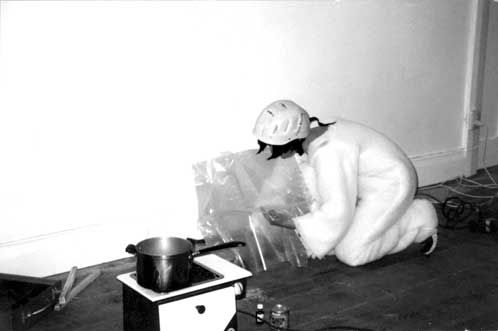
A Brief History of Artist-Run Spaces in Aotearoa
- City Gallery
- Sadly, illness prevented Emma Bugden from introducing a panel discussion on New Zealand artist-run spaces at this month’s Tuatara Open Late.
- Accepted from City Gallery blog feed by feedreader
- Tagged as:
- tuatara
Wellington City Gallery, Civic Square, Te Aro, Wellington, Wellington City, Wellington, 6011, New Zealand (OpenStreetMap)
-
-
-
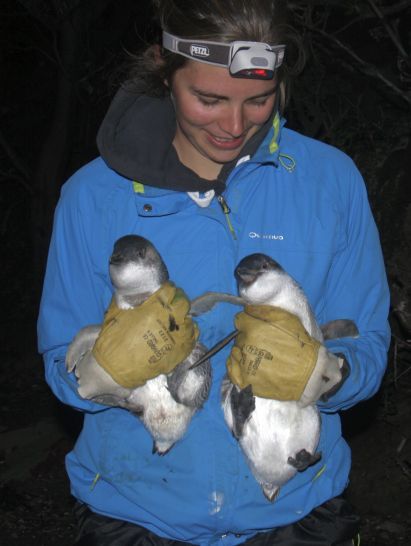
Penguin update – Wellington & Malborough news
- Te Papa's blog
- Since we blogged 2 weeks ago, the Te Papa team working on little penguins has started a second front of activity in Marlborough, based at Motuara Island in Queen Charlotte Sound. Almost all of the birds from the Wellington Harbour nests have had their tags retrieved, and are going to either locations within the harbour or... Read more »
- Accepted from Te Papa blog feed
- Tagged as:
- penguins
- te-papa
Te Papa, 55, Cable Street, Te Aro, Wellington, Wellington City, Wellington, 6011, New Zealand (OpenStreetMap)
-
-
-
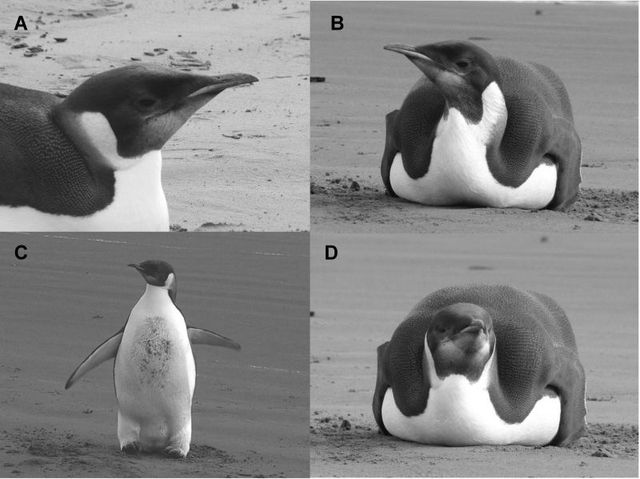
The global penguin – Part 11. How old was the Peka Peka emperor penguin?
- Te Papa's blog
- Te Papa’s curator of terrestrial vertebrates Dr Colin Miskelly tells the 11th instalment of the story of the emperor penguin that went where none had gone before. Previous blogs on the penguin were posted between 23 June and 12 September 2011.
- Accepted from Te Papa blog feed
- Tagged as:
- penguins
- te-papa
Te Papa, 55, Cable Street, Te Aro, Wellington, Wellington City, Wellington, 6011, New Zealand (OpenStreetMap)
-
-
-
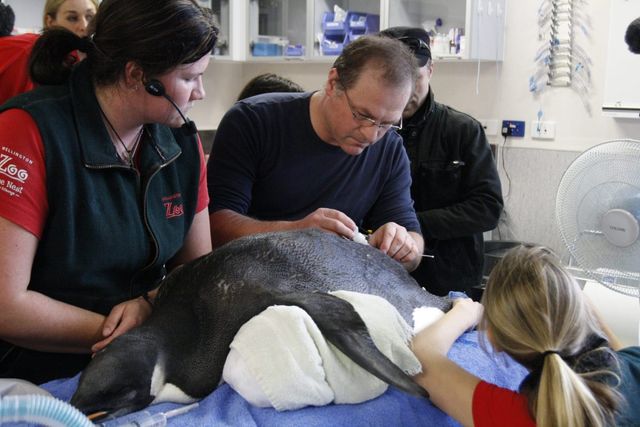
The global penguin – Part 7. The wandering emperor penguin enters the technological age
- Te Papa's blog
- The celebrity Emperor Penguin at Wellington Zoo had a satellite tracking device fitted yesterday in preparation for his trip towards colder climes during the coming week. The bird will be transported to south of 50 degrees on the NIWA research vessel Tangaroa this week.
- Accepted from Te Papa blog feed
- Tagged as:
- penguins
-
-
-
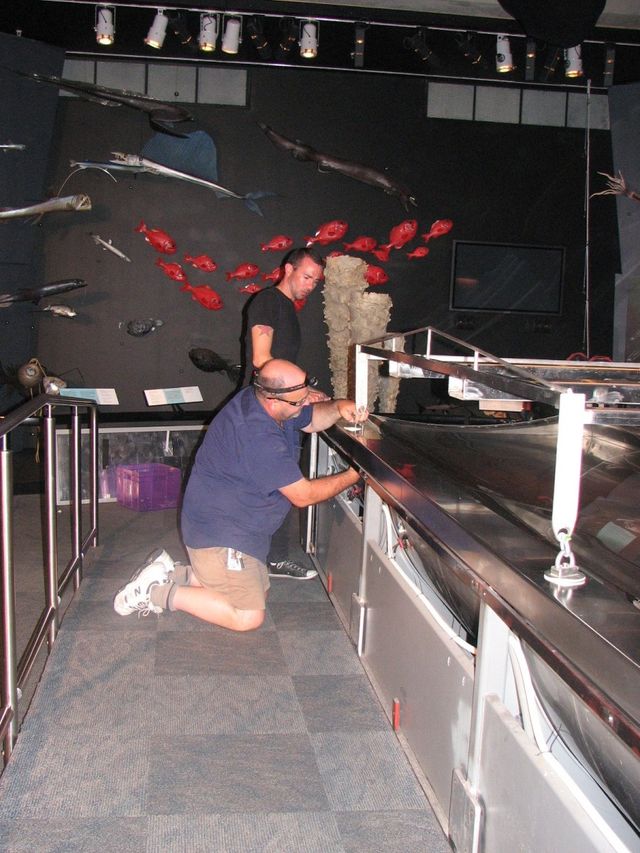
Colossal squid on display gets check-up
- Te Papa's blog
- We can all do with a check-up every so often – just to ensure things are going ok and we’re not falling apart. Today our team took the lid off the colossal squid tank and started to drain out the preservation fluid so we can give the colossal squid a check-up. We last had the lid off the tank in March 2009.
- Submitted by tonytw1
- Tagged as:
- cephalopods
-
-
-
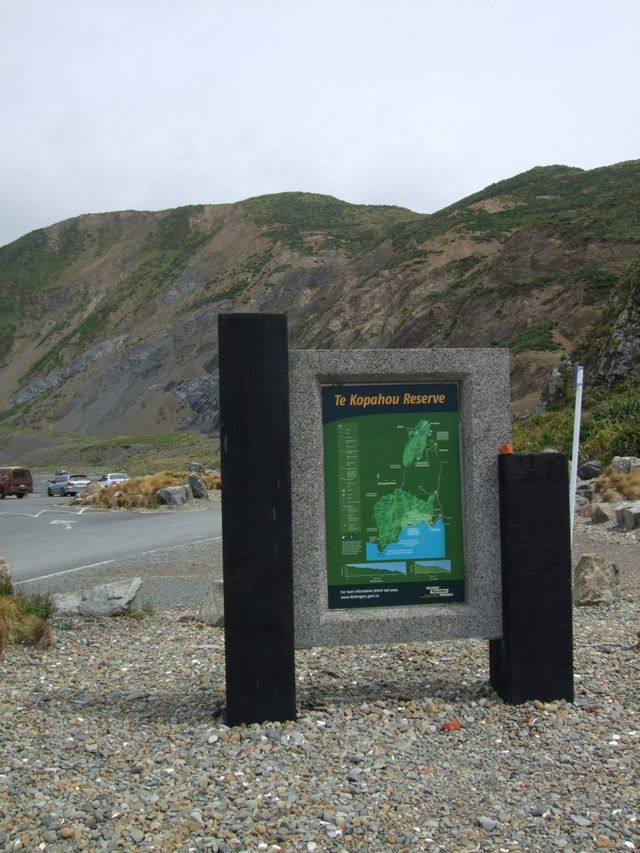
Killer whales again today, Owhiro Bay
- Te Papa's blog
- There were killer whales (orca) hanging around Wellington harbour yesterday – as reported by Anton van Helden, Te Papa’s marine mammal specialist. More killer whales were seen this morning, though I’d don’t know if they are the same animals. After a txt from Anton I raced down to the South Coast at Owhiro Bay, not far [...]
- Tagged as:
- animals
- island-bay
Owhiro Bay
-


